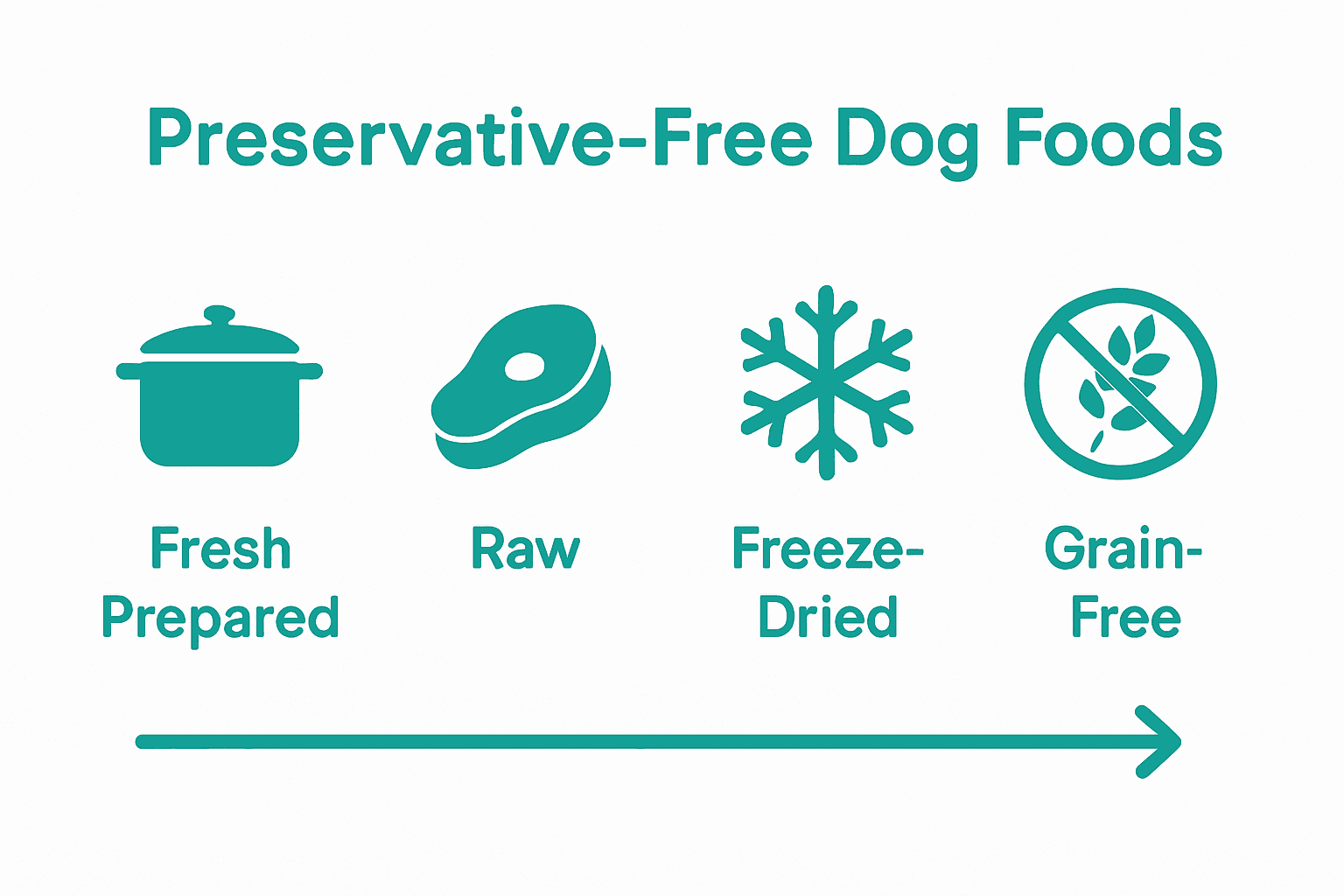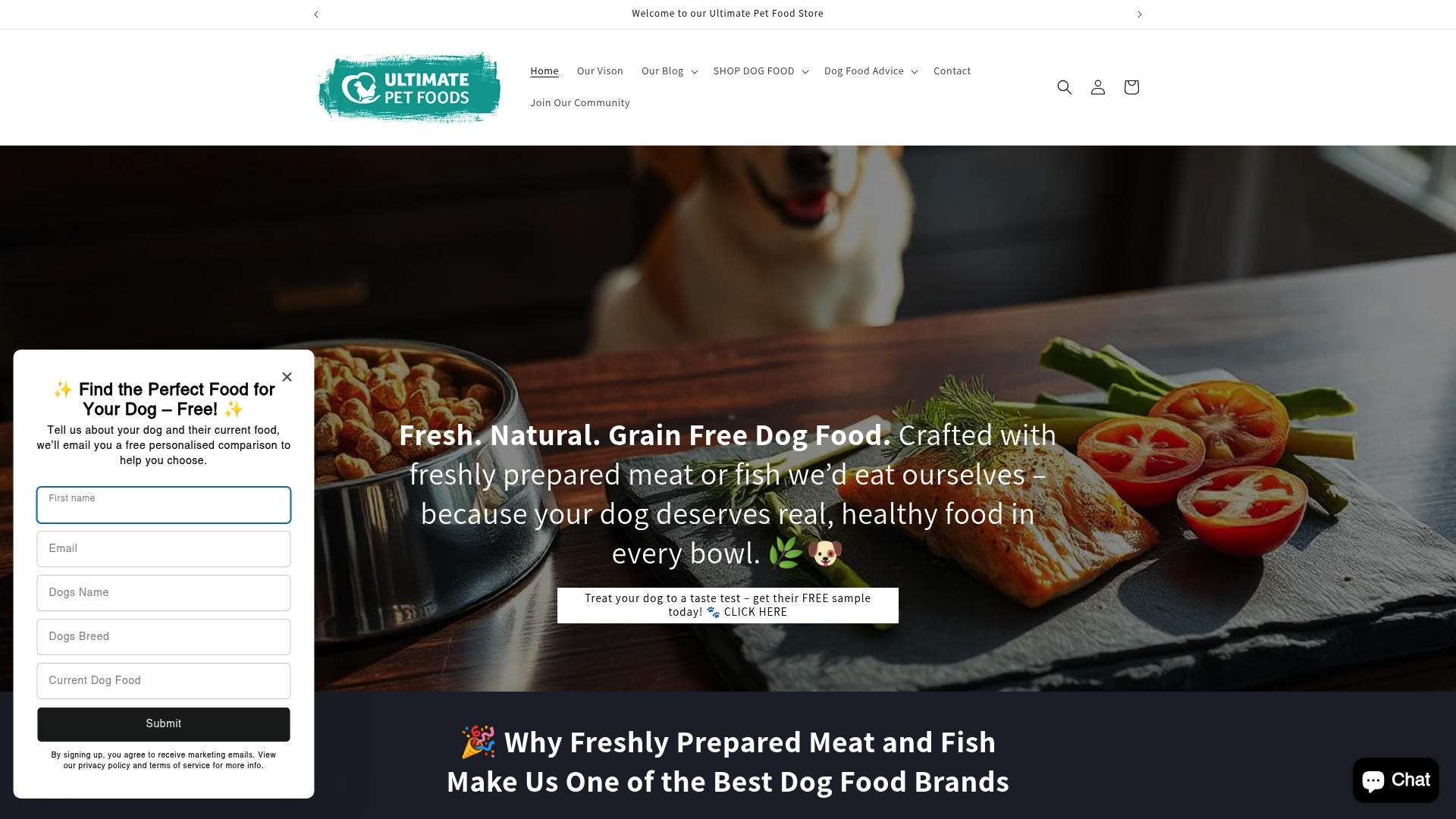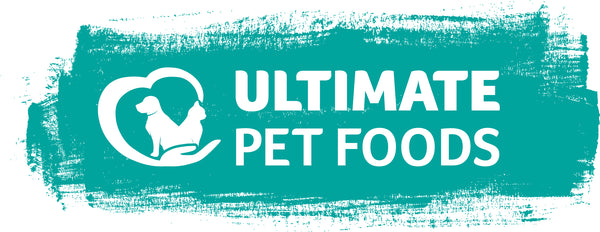Preservative Free Dog Food: Complete Guide for Owners

Share
Over 60 percent of dog owners now look for foods made without artificial preservatives. This shift shows growing concern over what goes into a dog’s bowl and how those choices affect health. The right preservative-free standards help ensure your pet gets real nutrition without risky chemicals or hidden toxins. Discover what defines these food labels, why standards matter, and how choosing wisely supports your dog’s wellbeing.
Table of Contents
- Defining Preservative Free Dog Food Standards
- Types of Preservative Free Dog Foods Available
- Key Ingredients and Labelling Requirements
- Health Benefits and Potential Drawbacks
- Risks, Common Pitfalls, and Legal Regulations
Key Takeaways
| Point | Details |
|---|---|
| Natural Ingredients | Prioritize fresh, human-grade ingredients in dog food to enhance nutrition and safety. |
| Avoid Artificial Preservatives | Select foods that are free from chemical additives to minimize health risks associated with allergies and sensitivities. |
| Cooking Techniques Matter | Employ gentle cooking methods, such as cooking at 82°C, to maintain nutrient integrity while eliminating harmful bacteria. |
| Understand Labels | Familiarize yourself with ingredient labels to ensure transparency and compliance with preservative-free standards. |
Defining Preservative Free Dog Food Standards
Preservative-free dog food represents a growing trend in pet nutrition focused on providing cleaner, more natural dietary options for our canine companions. According to pets4homes, preservatives play a critical role in commercial dog food by preventing fats and oils from becoming rancid, which could drastically reduce the product’s shelf life and safety.
Understanding preservative-free standards requires recognizing the challenges manufacturers face in creating stable, safe dog food without traditional chemical additives. FarmFood highlights that certain antioxidants like BHT, BHA, and Ethoxyquine have been commonly used to extend food longevity, with Ethoxyquine being particularly concerning due to its potential toxicity.
Our approach to preservative-free dog food involves gentle cooking at 82°C, which naturally helps lock in nutrients while maintaining food safety. Key standards for truly preservative-free dog food include:
- Using fresh, human-grade ingredients
- Implementing strict quality control measures
- Incorporating natural preserving techniques like careful temperature management
- Including prebiotics MOS and FOS for natural gut health support
By prioritising freshly prepared meat or fish and avoiding artificial chemical preservatives, pet owners can provide their dogs with nutrition that supports overall wellness without compromising food safety or nutritional integrity. Understanding Natural Dog Food Ingredients for Healthier Pets offers additional insights into selecting high-quality, preservative-conscious dog nutrition.
Types of Preservative Free Dog Foods Available
Preservative-free dog foods have evolved significantly, offering pet owners multiple nutritional approaches that prioritize health and natural ingredients. According to Animed, many artificial additives can trigger allergic reactions in dogs, including skin and stomach issues, making alternative food options increasingly important for canine wellness.
The primary types of preservative-free dog foods include:
Here’s a comparison of the main types of preservative-free dog foods and their key features:
| Type | Key Features | Potential Risks |
|---|---|---|
| Fresh Prepared Diets | Gently cooked at 82°C Human-grade ingredients Maintains nutrients |
Shorter shelf life |
| Raw Food Diets | Unprocessed meats No cooking Minimal additives |
Bacterial contamination Nutritional imbalance |
| Freeze-Dried Meals | Minimal processing Natural preservation Convenient storage |
Potential rehydration errors |
| Grain-Free Formulations | No wheat or soy Reduces common allergens Often combined with fresh meats |
Nutrient deficiencies (possible) |

- Fresh Prepared Diets: Gently cooked at 82°C to lock in nutrients
- Raw Food Diets: Unprocessed meat-based options
- Freeze-Dried Meals: Minimally processed with natural preservation techniques
- Grain-Free Formulations: Avoiding common allergens like wheat and soy
However, pet owners should exercise caution with certain approaches. Petplan warns that raw food diets can potentially expose dogs to pathogenic bacteria like salmonella and E. coli, which might increase the risk of food-borne illnesses.
Our approach focuses on human-grade ingredients prepared with natural preservation methods, incorporating prebiotics MOS and FOS to support digestive health. By carefully selecting ingredients and using gentle cooking techniques, we provide a safe alternative to traditional preservative-laden dog foods. For more insights into selecting high-quality nutrition, explore our guide on understanding the benefits of fresh dog food.
Key Ingredients and Labelling Requirements
Navigating the complex world of preservative-free dog food labels requires a keen understanding of ingredient regulations and nutritional standards. En highlights that food product labels must clearly inform customers about the nature of the product, ensuring transparency and accurate representation of the contents.
Key ingredients to look for in preservative-free dog foods include:
- Fresh Meat Sources: Clearly identified protein origins
- Natural Preservatives: Prebiotics MOS and FOS
- Whole Food Ingredients: Minimally processed components
- Allergen Information: Clear disclosure of potential triggers
Labelling requirements for preservative-free dog foods are comprehensive and must address several critical aspects. Healthy Dog Food Ltd recommends providing detailed feeding guidelines, noting that individual dogs have varying nutritional requirements that should be carefully considered.
Our approach emphasizes complete transparency, with labels that showcase human-grade ingredients prepared through gentle cooking at 82°C. Pet owners can confidently understand their dog’s nutrition by examining ingredient lists that prioritize fresh, natural components.
 For more detailed insights into deciphering dog food labels, explore our guide on how to read dog food ingredients.
For more detailed insights into deciphering dog food labels, explore our guide on how to read dog food ingredients.
Health Benefits and Potential Drawbacks
Preservative-free dog food represents a nuanced nutritional approach with significant potential benefits and important considerations for pet owners. Pawsome Pantry highlights that some dogs may experience sensitivities to traditional preservatives, with symptoms including skin rashes, digestive issues, itching, and excessive scratching.
Key health benefits of preservative-free dog food include:
- Enhanced Digestibility: More natural ingredient profiles
- Reduced Allergen Exposure: Fewer artificial chemical triggers
- Improved Nutrient Absorption: Less processed ingredients
- Support for Sensitive Dogs: Gentler on digestive systems
However, pet owners must also be aware of potential drawbacks. All About Dog Food warns that raw meat-based diets can potentially contain harmful bacteria like Salmonella, Listeria, E. coli, and Campylobacter, posing risks to both dogs and household members.
Our approach mitigates these risks by gently cooking ingredients at 82°C, which helps eliminate harmful bacteria while preserving nutritional integrity. By incorporating prebiotics MOS and FOS and using human-grade ingredients, we provide a safe, nutritionally complete alternative to traditional preservative-laden and raw food options. For additional insights into selecting safe, healthy dog nutrition, explore our guide on ingredients to avoid in dog food.
Risks, Common Pitfalls, and Legal Regulations
Navigating the complex landscape of preservative-free dog food requires a thorough understanding of potential risks and regulatory considerations. Forestside Vets warns that raw meat diets can introduce significant health hazards, with harmful bacteria like Salmonella, Listeria, and E. coli potentially spreading through a dog’s saliva and faeces, posing risks to both pets and human family members.
Common pitfalls in preservative-free dog food selection include:
- Bacterial Contamination: Increased risk of pathogenic microorganisms
- Nutritional Imbalance: Potential gaps in essential nutrients
- Storage Challenges: Shorter shelf life and preservation difficulties
- Cross-Contamination: Higher risk of spreading harmful bacteria
Veterinary Wellness Centre highlights that dogs on raw meat diets can shed a greater number of potentially harmful bacteria, including those resistant to multiple antibiotics. This underscores the critical importance of careful food preparation and selection.
Our approach mitigates these risks through gentle cooking at 82°C, which eliminates harmful bacteria while preserving nutritional integrity. By using human-grade ingredients, incorporating prebiotics MOS and FOS, and following strict quality control measures, we provide a safer alternative to traditional preservative-laden and raw food options. For more detailed guidance on selecting safe dog nutrition, explore our guide on ingredients to avoid in dog food.
Discover Truly Preservative Free Nutrition for Your Dog
Finding dog food without artificial preservatives can be challenging, especially when you want to prioritise your dog’s health without compromising safety or nutrition. The article highlights concerns about harmful additives and the risks of raw diets, emphasising the importance of natural preservation methods like gentle cooking and the inclusion of prebiotics for digestive health. If you want to support your dog’s wellbeing with fresh, human-grade ingredients prepared carefully to lock in nutrients, you are not alone.
At Ultimate Pet Foods, we understand the need for clean, natural options that respect your dog’s unique dietary needs. Our range of Small Breed Grain Free Dog Food | Freshly Prepared & Natural and Dry Dog Food | Grain-Free & Science-Backed Kibble – Ultimate Pet Foods offers just that. Enjoy the peace of mind that comes from products crafted without artificial preservatives but instead use gentle cooking at 82°C and include prebiotics MOS and FOS to support gut health.
Are you ready to switch your dog to a preservative-free diet that truly nourishes?

Explore our carefully formulated options at https://ultimatepetfoods.co.uk now to ensure your dog benefits from the clean, natural nutrition they deserve. Give your pet the gift of health with confidence and shop today.
Frequently Asked Questions
What are the main types of preservative-free dog foods?
The primary types include fresh prepared diets, raw food diets, freeze-dried meals, and grain-free formulations. Each type has unique features and benefits, addressing the varied nutritional needs of dogs.
How can I ensure the dog food I choose is truly preservative-free?
Look for labels that specify fresh, human-grade ingredients, natural preservatives, and clear allergen information. Additionally, check for cooking methods that emphasize gentle preparation, such as cooking at 82°C.
What health benefits can I expect from feeding my dog preservative-free food?
Feeding preservative-free dog food can enhance digestibility, reduce allergen exposure, improve nutrient absorption, and support sensitive digestive systems, leading to overall better health for your pet.
What risks should I be aware of when choosing raw or minimally processed dog food?
Raw diets can pose risks of bacterial contamination from pathogens like Salmonella and E. coli. There is also the potential for nutritional imbalance and difficulty in storage due to shorter shelf life, making careful selection and preparation crucial.
Recommended
- How to Store Dog Food Naturally for Freshness and Safety – Ultimate Pet Foods
- Fermented Foods for Dogs: Complete Guide to Benefits
- Understanding the Benefits of Fresh Dog Food for Your Pet – Ultimate Pet Foods
- Complete Guide to Dog Food Storage Containers
- Essentials hundefoder
- 8 Must-Have Dog Travel Accessories List for Pet Owners – Wuffinity Dog Store





